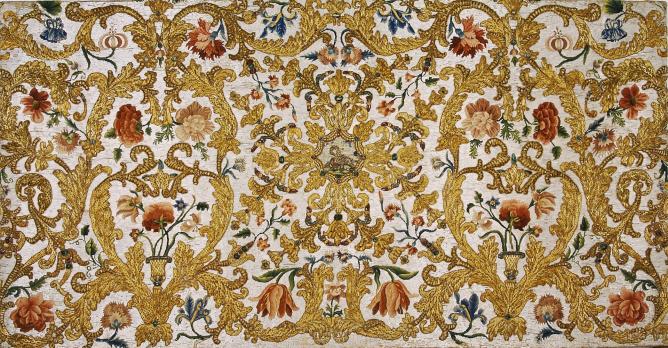ENGLISH VERSION OF ARTICLE FROM ARSMagazine
Clic on the image below
33 ALTAR FRONTAL WITH PELICAN
Dimensions: h: 93; w: 185
In the centre of the altar frontal, in a small festooned octagonal cartouche, is a pelican and its offspring in the middle of a cross. The pelican is a symbol of the sacrifice of Christ, for the bird is reputed to make its own chest bleed in order to feed its offspring. Other legends relate that the pelican kills its offspring , then, filled with remorse, tears open its chest with its beak. Its blood, which poured onto the chicks, brought them back to life. It symbolises the sacrifica of Christ, shedding his blood for others. This iconography is a reminder of the Eucharistic sacrifice which is made on the altar and the resulting abundance of life. On both sides of the cartouche are bowers of acanthus leaves surrounding lyre-shaped compartments containing small vases of flowers. Scrolls flow outwards from the points of the lyres and fold down towards the centre and the top to define curved niches with roses, tulips, carnations, irises, lilies and columbines. This ornamental floral profusion is designed to evoke the beauty of paradise.
The embroidery is in tubular pearls (jais - in coloured glass): white in horizontal rows for the background, golden yellow in the high relief “ronde-bosse” for the branches and bowers, and green and black in imitation of cabochons. Decorations in twisted yellow and coral silk cord wrapped with gilt metal lame. Foliage and flowers are in polychrome wool in long and short stitch, stem stitch and French knots. The pelican and its chicks are in silk and silver filé on white, yellow and green bugle beads.
© Le trésor brodé de la Cathédrale du Puy-en-Velay, Éditions Albin Michel, photo Alain Rousseau
Date de dernière mise à jour : 05/07/2021
Ajouter un commentaire
